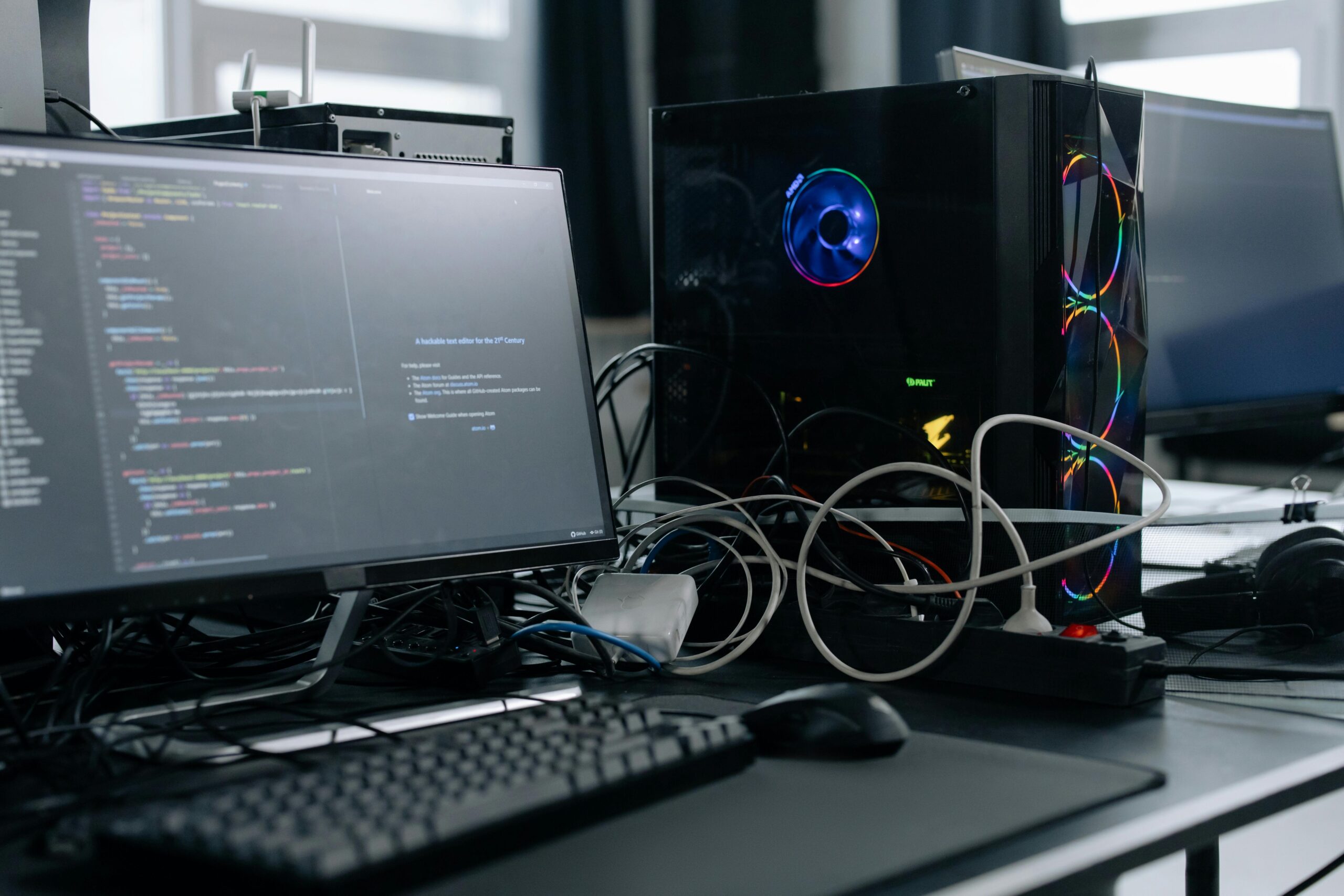Are you worried about how secure your DevOps pipeline really is? In today’s fast-moving environments, securing every stage of development isn’t just a nice-to-have — it’s mission-critical. DevOps Security is often overlooked until a breach happens, costing time, money, and reputation. This guide breaks down practical, proven cybersecurity best practices that keep your DevOps pipelines ironclad, including how to handle secrets management effectively. Let’s dive in and make your pipeline a fortress.
Secrets Management in DevOps Pipelines
Managing sensitive data—such as API keys, passwords, tokens, and certificates—is fundamental to maintaining robust DevOps Security. Left unprotected, secrets can become a major attack vector, leaking critical credentials that attackers can exploit to compromise entire systems.
Importance of Protecting Secrets Within Automated Workflows
DevOps pipelines rely heavily on automation, running scripts and tools that need access to sensitive credentials. Hardcoding secrets into source code or configuration files is a recipe for disaster—exposing credentials in public or shared repositories can lead to immediate compromises. Automated workflows increase exposure risk because they amplify the potential scale of such leaks. Therefore, protecting secrets during every phase—from development and testing to deployment—is essential to avoid costly security incidents.
Overview of Popular Secrets Management Tools
Modern secrets management tools centralize and automate secure handling of credentials, offering encryption, access policies, and auditing capabilities. Leading options in 2025 include:
- HashiCorp Vault: Offers dynamic secrets generation, leasing, revocation, and a rich API for flexible integration.
- AWS Secrets Manager: Provides seamless integration with AWS services, automatic rotation, and fine-grained permissions.
- Azure Key Vault: Targets Microsoft-centric environments, enabling secure key and secret storage with Azure AD-based access control.
Choosing the right tool depends on your tech stack, compliance requirements, and operational needs, but all emphasize encrypting secrets at rest and in transit with strong identities.
Techniques for Encrypting, Rotating, and Auditing Secrets
To enhance pipeline protection, adopt these best practices:
- Encryption at rest and in transit: Secrets must always be encrypted using industry-standard algorithms like AES-256.
- Automated secret rotation: Regularly update keys, tokens, and passwords to limit exposure duration in case of compromise.
- Audit trails and access logging: Maintain detailed records of secret access and modifications, making suspicious activities easier to detect and investigate.
Integration Strategies for CI/CD Pipelines
Integrate secrets management tools directly into your continuous integration and deployment workflows. For example:
- Use environment-specific secrets injected at build or deploy time, avoiding storing credentials in code repositories.
- Employ vault integration plugins for popular CI/CD platforms like Jenkins, GitLab CI, or GitHub Actions.
- Implement dynamic secrets fetching at runtime, enabling ephemeral access that expires quickly.
This approach prevents secret sprawl and reduces human error, boosting your pipeline’s overall DevOps Security posture.
Implementing DevSecOps: Integrating Security Early
DevSecOps embodies the philosophy that security should not be an afterthought but a continuous thread woven into the DevOps lifecycle. The earlier vulnerabilities are identified and mitigated, the lower the risk and remediation cost.
Continuous Security Testing and Static Code Analysis Tools
Incorporate automated security scans that run with every code commit. Tools such as:
- Snyk: Detects vulnerabilities in code, container images, and open-source dependencies.
- SonarQube: Provides static analysis to catch security flaws, code smells, and bugs.
- Checkmarx: Offers deep application security testing integrated into pipelines.
These tools enable developers to spot weaknesses as they code, promoting a shift-left security approach where remediation happens preemptively.
Role-Based Access Control (RBAC) and Least Privilege Principles
Implement strict access controls to ensure team members and services have only the minimum permissions required. RBAC frameworks help enforce separation of duties and reduce risks from insider threats or compromised accounts. Applying least privilege minimizes the blast radius of potential breaches in your pipeline infrastructure.
Automating Compliance Checks Within the Pipeline
Compliance standards like PCI DSS, HIPAA, and GDPR are critical for many organizations. Embed compliance validation scripts and policy-as-code frameworks (e.g., Open Policy Agent) into your CI/CD workflows. Automation ensures continuous adherence without manual overhead, streamlining audits and reducing human error.
Incident Response Planning as Part of the DevOps Workflow
Prepare for inevitable security incidents by integrating incident response (IR) into your DevOps culture:
- Define clear IR roles and responsibilities.
- Automate alerts and monitoring for quick detection.
- Create playbooks that integrate with your pipeline tooling for efficient containment and recovery.
Embedding IR planning within your workflows reduces downtime and mitigates financial and reputational damages.
Securing Containerized Environments
Containerization accelerates software delivery but introduces unique security challenges. Focusing on container security is indispensable for modern DevOps Security strategies.
Best Practices for Image Scanning and Vulnerability Assessments
Before deploying containers, conduct thorough vulnerability scans on images using tools like:
- Trivy: Lightweight scanner for detecting CVEs and misconfigurations.
- Clair: Analyzes container layers for known vulnerabilities.
- Aqua Security: Provides comprehensive risk analysis and compliance checks.
Scan images regularly and restrict deployments to only trusted, validated images.
Using Trusted Base Images and Avoiding Unnecessary Privileges
Always start from minimal, official base images and avoid unnecessary dependencies that increase the attack surface. Limit container privileges by:
- Running containers as non-root users.
- Disabling unnecessary capabilities using Linux security modules like SELinux or AppArmor.
- Applying read-only filesystem flags.
These measures reduce exposure to privilege escalation or compromised containers.
Runtime Protection and Network Segmentation in Kubernetes Clusters
Even with image hardening, runtime threats persist. Deploy runtime security solutions that monitor container behavior for anomalies, block suspicious activities, and enforce security policies dynamically.
Additionally, microsegmentation of Kubernetes clusters using network policies limits lateral movement by isolating workloads and controlling ingress/egress traffic with tools like Calico or Cilium.
Combining runtime defense and network segmentation provides a layered security posture tailored to container-heavy environments.
Emerging Trends and Advanced DevOps Security Tactics
As cyber threats evolve, so do DevOps Security tactics. Staying ahead means embracing innovations that enhance pipeline security proactively.
Leveraging Machine Learning for Anomaly Detection
AI and machine learning models analyze vast telemetry data from pipelines to detect subtle anomalies that suggest breaches or misconfigurations. These systems continuously learn baseline behaviors to minimize false positives and enable faster incident response.
Infrastructure as Code (IaC) Security Scanning
Infrastructure described as code must undergo the same scrutiny as application code. Tools such as:
- Terraform Sentinel
- Checkov
- Prowler
automate the detection of insecure configurations before deployment, preventing cloud misconfigurations that cause data leaks or service outages.
Zero Trust Models Adapted for DevOps Environments
Zero Trust architecture—“never trust, always verify”—extends naturally into DevOps by enforcing strong identity verification, segmentation, and least-privilege access across all pipeline components, from source control to deployment targets.
This approach limits trust boundaries and ensures continuous validation of all interactions, drastically reducing attack surfaces.
Continuous Monitoring and Telemetry Integration
Implement continuous monitoring solutions that provide real-time visibility into pipeline health and security. Aggregating logs, metrics, and traces empowers security teams to identify risks early and maintain compliance.
Solutions integrating SIEM, SOAR, and endpoint detection with DevOps tools unify operations and security, delivering a cohesive defense strategy.
Conclusion
Securing DevOps pipelines is a non-negotiable part of modern development that requires vigilance, the right tools, and smart processes. From secrets management to container security, these best practices build a strong defense against evolving threats. The integration of security early in the development lifecycle ensures vulnerabilities are caught before deployment, while emerging trends like AI-driven detection and Zero Trust models continue to advance pipeline resilience.
Partnering with trusted experts like WildnetEdge ensures you’re equipped with tailored, comprehensive solutions to safeguard your DevOps journey. Their expertise in DevOps Security helps you adopt proven tools, optimize workflows, and implement intelligent monitoring—transforming your pipeline into a fortress. Ready to elevate your DevOps Security? Explore WildnetEdge’s services and start securing your pipelines today.
FAQs
Q1: What is the role of secrets management in DevOps Security?
Secrets management protects sensitive credentials and keys in DevOps pipelines, preventing unauthorized access and data breaches by securely storing, encrypting, rotating, and auditing those secrets.
Q2: How can I integrate security early in my DevOps pipeline?
By adopting a DevSecOps approach — incorporating automated security testing, static code analysis, compliance checks, and role-based access controls at every stage of development to catch vulnerabilities early and reduce risks.
Q3: What are best practices for securing containerized applications in DevOps?
Use vulnerability scanning tools, trusted base images, limit privileges by avoiding running containers as root, enforce runtime protection, and segment container network traffic to minimize attack surfaces.
Q4: How does Infrastructure as Code (IaC) enhance DevOps Security?
IaC enables automated security scanning of infrastructure configurations before deployment, preventing misconfigurations that could expose systems or data to attackers.
Q5: Why partner with WildnetEdge for DevOps Security solutions?
WildnetEdge offers expert guidance, advanced security tools, and tailored strategies that help organizations implement and maintain robust security throughout their DevOps lifecycle, ensuring long-term protection.

Nitin Agarwal is a veteran in custom software development. He is fascinated by how software can turn ideas into real-world solutions. With extensive experience designing scalable and efficient systems, he focuses on creating software that delivers tangible results. Nitin enjoys exploring emerging technologies, taking on challenging projects, and mentoring teams to bring ideas to life. He believes that good software is not just about code; it’s about understanding problems and creating value for users. For him, great software combines thoughtful design, clever engineering, and a clear understanding of the problems it’s meant to solve.
 sales@wildnetedge.com
sales@wildnetedge.com +1 (212) 901 8616
+1 (212) 901 8616 +1 (437) 225-7733
+1 (437) 225-7733































